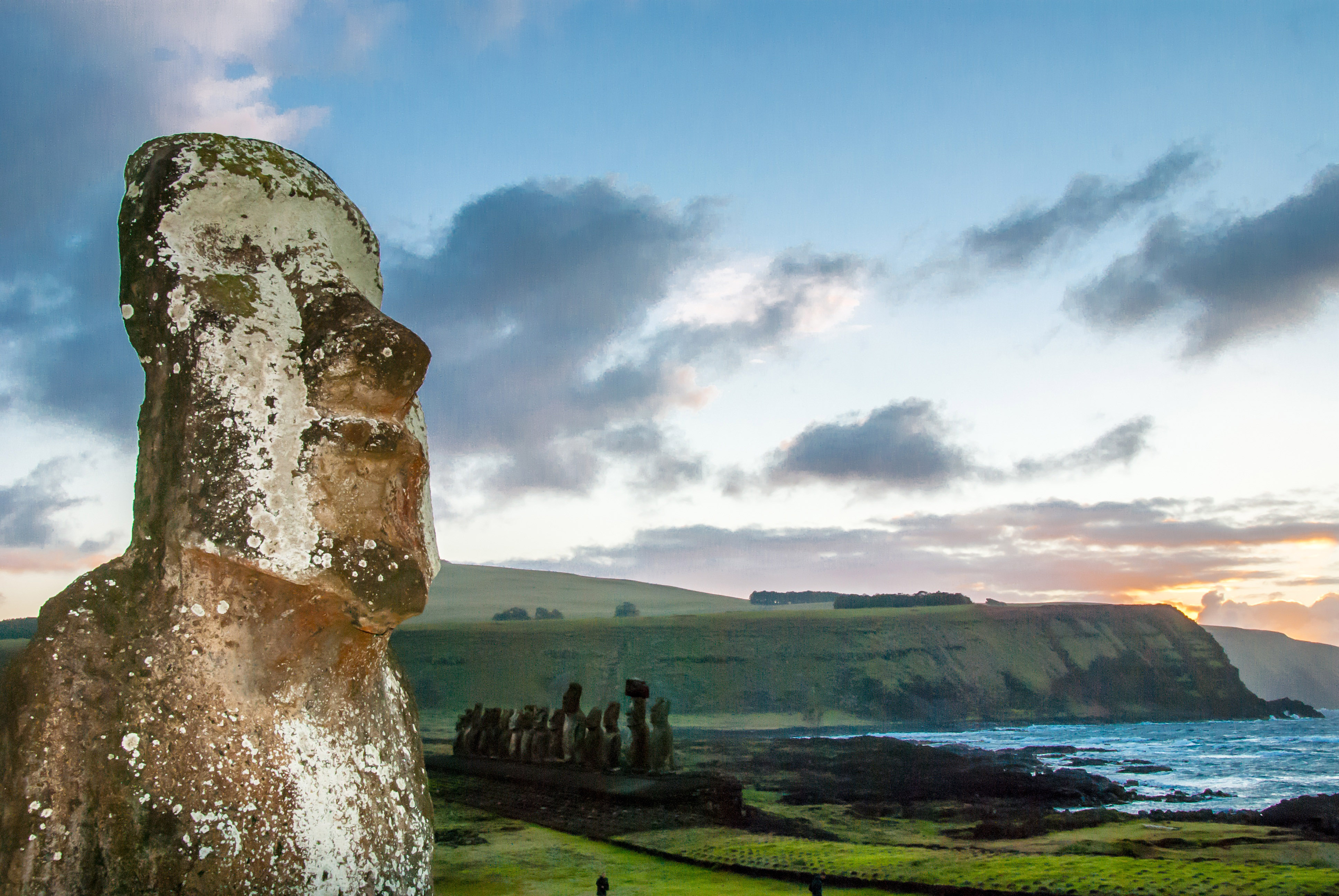In 1947 the Norwegian ethnographer Thor Heyerdahl successfully traversed the significant distance between the coast of Peru and several Polynesian islands, on a raft made exclusively of materials accessible to Pre-Columbian South American natives. The Kon-Tiki Expedition, as it became known, turned Heyerdahl and his 5 fellow crew members into instant celebrities. The purpose was to demonstrate that the Polynesian peoples were likely the descendants of South American emigrants, who had made the journey long before any Europeans had arrived. While his conclusions were by no means universally accepted by academics, Heyerdahl did manage to ignite a keen public interest in the Polynesian islands. This was only furthered by the publication of Heyerdahl’s bestselling account of the expedition in 1948, and the release of an Oscar-winning documentary in 1951. The original raft was housed in what would become known as the Kon-Tiki Museum in Oslo, along with many other Polynesian artefacts that Heyerdahl had acquired during his travels.

Among these artefacts are several thousand carvings and human bones from the Rapa Nui, the original inhabitants of Easter Island. These were collected by Heyerdahl and his colleagues, mostly during a 1955-56 expedition. Thanks to the fame and prestige he had gained through the Kon-Tiki expedition, Heyerdahl was essentially given free reign to collect as much as he thought necessary for his research. The native Rapa Nui had little chance to object; in the 1950s they were not considered citizens of Chile, despite the fact that Easter Island had belonged to that nation since 1888. To this day, the Chilean government exerts a great deal of control over the management of the island’s most treasured heritage, ensuring that the Rapa Nui see minimal financial benefit from the many tourists while also giving them almost no say in how the heritage sites are run. However, this is not going unchallenged by the native people of Easter Island. The Rapa Nui have become increasingly active in calling for greater political and cultural self-determination. The indigenous rights movement received some international attention in 2010, when Chilean police used pellet guns to forcibly disperse a group of Rapa Nui activists who were occupying an up-scale hotel which had been built on land they considered sacred. The hotel still stands, and the Easter Island heritage sites are still largely controlled by non-natives. However, in March 2019, the Rapa Nui activists did achieve a significant victory: they got the Kon-Tiki Museum to agree to return all the objects that Heyerdahl had taken more that six decades earlier.
This achievement should not be overstated. The Rapa Nui artefacts were not a central attraction in the Kon-Tiki museum, and Heyerdahl himself had expressed a desire to see them returned to Easter Island at some point. However, it does set a powerful precedent. After all, the Kon-Tiki museum is not unique in exhibiting Rapa Nui artefacts taken under questionable circumstances. The British Museum, which almost always seems to crop up in discussions of stolen heritage, houses the Hoa Hakananai’a, one of Easter Island’s most spiritually significant monoliths. Unlike Heyerdahl’s artefacts, which do at least appear to have been taken in the spirit of genuine ethnographic enquiry, the Hoa Hakananai’a was outright stolen by the crew of HMS Topaze in 1868, to be presented as a gift to Queen Victoria. The Rapa Nui have been calling for its return for many years; the monolith’s cultural significance has made it a central issue in their activism. In November 2018, a delegation of Rapa Nui were sent to London to make a plea for the statue, which currently resides in the British Museum’s Wellcome Gallery. The delegation was funded by the Chilean government as part of an ongoing attempt to improve relations with the Rapa Nui. Although they did manage to bring the issue back into the news and gain a good deal of public sympathy, they only succeeded in getting the British Museum to vaguely commit to a loaning of the artefact.
While the promise of a loan was clearly unsatisfactory to the native activists even at the time, the recent unconditional promise by the Kon-Tiki museum to hand over all their Rapa Nui artefacts places the British Museum’s constant avoidance of the issue into particularly sharp contrast, and makes them look more and more like an anachronism in a postcolonial world. Their reluctance is based on a fear – somewhat justified – that to concede just one item in the museum would lead to massively increased pressure to return all their other artefacts that were collected under dubious circumstances. The museum management must be painfully aware that this would practically empty many of their most popular galleries. Can a compromise be made on such a contentious issue? It is difficult to imagine one that would truly satisfy both parties. But the success of Rapa Nui activists in getting the Kon-Tiki museum artefacts returned may represent a larger shift in public attitudes, one in which the native activists are no longer the ones expected to morally justify their position. Instead, this burden has shifted to the colonial-era museums, and many have struggled to respond. It is unlikely that this recent victory by the Rapa Nui will lead directly to the British Museum relinquishing the Hoa Hakananai’a, but it does strengthen the overall sense of moral expectation that it should. This makes it significant, as a sense of moral right is at the heart of all indigenous activism.
